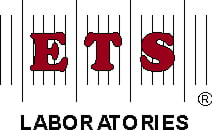Originally published : Tue, January 26, 2010 @ 10:57 PM
 Updated : Wed, October 1, 2014 @ 4:38 PM
Updated : Wed, October 1, 2014 @ 4:38 PM
The Grand Ballet
The biological conversion of sugars to alcohol and malic acid to lactic acid are backdrops to the grand ballet of yeast and bacteria - the white hat microbe and the dark sinister microbe rising and falling with the tides of aerobic and anaerobic conditions. Wine spoilage and the preemptive detection of microbes and yeast that cause spoilage is an art in and of itself. Spoilage comes in two flavors, if you'll excuse the pun: overt and smelly or covert and disappointing. The cast of characters in this drama are either yeast bi-products including:
ethyl acetate - the fruity taste;
sulfides - the complex and misunderstood;
aldehydes - the cider aroma;
4-ethyl phenols with their "wet dog" odor;
or bacterial bi-products which confer the following properties on the unsuspecting libation:
acetic acid, - the spoiler, aka vinegar taste;
biogenic amines - the aroma thieves;
vermin - lysine degradation leaving a "mousy" aftertaste.
Whether a microbe is a "spoiler" or not is dependent upon their timing during the fermentation and bottling process. As the backdrop of chemistries change from filling the barrel to opening the bottle, the wine detective must use available tools to detect the spoiler, identify it, and deter its continued growth. In the detective's kit are all the tools he needs to solve the case and bring this ballet to a refined and tasty wine delivery.
The process of wine production is described as "managing a biological process". The key is to manage without draconian interaction, or "minimal touch" as Dr. DeScenzo puts it. It is the detection of these spoiler characters, yeast or bacteria, in all stages of wine development that enables the wine maker to preemptively curtail their uncontrolled or undesirable growth. The ETS Scorpions® Wine Spoilage Detection Kit contains the primary components necessary to provide the winery with high quality diagnosis and quantification of yeast or bacteria. Scorpions Primers were uniquely designed to detect specific members of the yeast and bacterial families. Multiplex hybridization assays of up to 4 Scorpions Primers are done at various stages of the fermentation process. The Scorpions Primers are labeled with CAL Fluor®, Quasar® and BHQ® dyes, which provide:
• Specific and sensitive detection
• Large dynamic range of detection (10 through 10 million cells)
• Multiplexing capability
• High signal to noise ratio
• Rapid intramolecular signaling
Despite the capabilities of the Scorpions Primers, there are a few challenges which accompany multiplexing experiments, including: intermolecular interactions, the consideration of emission spectral overlap upon dye selection, and the need for easily interpretable data of biological relevance.
Other non-chemistry related issues that confound the analysis and detection of spoilers include variability within the sampling process. Collecting representative samples of the wine is a truly difficult hurdle for wineries to overcome. The difficulty is due to varying collectors, stratification of the wine over time, and the necessity to homogenize the wine before testing. In addition to the process of sample collection, there is the very nature of wine matrix diversity - the change from grape juice to wine, as well as the different types of varietals and wine styles to consider. Examples include: light, sterile-filtered white wines, which are easy to test; and heavy, unfiltered red wines, which are difficult to test. Each wine category has different levels of inhibitors that can interfere with cell lysis or the PCR reaction. The Scorpions diagnostic assay must be able to generate accurate results at each phase of production and with different wine varietals and styles.
Target number variability is another issue further complicating the use of qPCR in the industry. High target number increases the potential for cross contamination between wells on the PCR plate. When emission spectra overlap and interfere in individual channel analysis, cross-talk between channels of a PCR machine occurs and makes data interpretation more difficult. Finally, the diagnostic kit must be compatible across multiple platforms so the world can readily accept the kit upon market launch. It is therefore essential that the kit provides universally usable reagents that make analysis and data interpretation platform-independent and easy to conduct. Currently the Scorpions Wine Spoilage Kit is used in the US, Europe, and Australia as a preemptive screening tool.
ETS Laboratories is the first lab to adapt genetic testing to the wine industry. Over the past seven years, ETS has worked closely with Biosearch Technologies on the design and development of Scorpions primers for qPCR-based wine spoilage kits. The advancement of this technology will yield tremendous benefits to wineries by improving the speed and accuracy of their wine analysis. Genetic testing has the power to detect small populations of target organisms and in conjunction with other testing techniques can be implemented as an effective diagnostic tool in the wine production industry.
For more on ETS laboratories, visit their website at http://www.etslabs.com/. To learn more about Scorpions Primers and the qPCR methodology, visit our website at http://www.biosearchtech.com.
*Scorpions Primers are a product of DxS.

